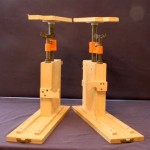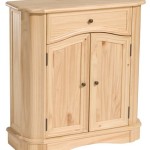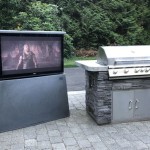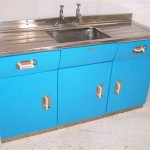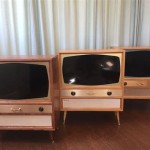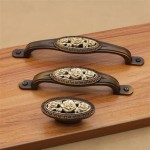What Are The Best Soft Close Cabinet Hinges?
Soft close cabinet hinges have revolutionized kitchen and bathroom design, offering a blend of functionality and luxury. They eliminate the jarring sounds of slamming doors and drawers, extending the lifespan of cabinetry by preventing impact damage. Selecting the best soft close cabinet hinge, however, requires careful consideration of various factors, including hinge type, material, adjustability, and installation requirements. This article explores these aspects in detail to provide a clear understanding of what constitutes a quality soft close hinge.
Cabinet hinges are crucial components responsible for the smooth operation and overall longevity of cabinets. The advent of soft close technology has significantly improved the user experience, eliminating noise and reducing wear and tear. Soft close hinges achieve this by incorporating a small damper mechanism that gently slows the door's closing speed in the final inches, preventing it from slamming shut. This feature is particularly beneficial in households with children or individuals who may frequently close cabinets with force.
The market offers a wide array of soft close cabinet hinges, each with its own set of advantages and disadvantages. Understanding the different types available is essential for making an informed decision that aligns with specific project needs and budget constraints. Factors such as cabinet style (face frame or frameless), door overlay (full, half, or inset), and desired level of adjustability all play a role in the selection process. Furthermore, the quality of materials used in the hinge construction directly impacts its durability and resistance to corrosion.
Types of Soft Close Cabinet Hinges
Several distinct types of soft close cabinet hinges cater to different cabinet designs and functional requirements. Understanding these types is fundamental to selecting the appropriate hinge for a particular application.
Overlay Hinges: These are the most common type of soft close hinge, designed for cabinets where the door partially or fully covers the cabinet frame. Overlay hinges come in various overlay measurements, indicating the amount the door overlaps the cabinet frame. Full overlay hinges cover the entire frame, while partial overlay hinges leave a portion of the frame visible. These hinges are relatively easy to install and adjust, making them a popular choice for both DIY enthusiasts and professional installers. Within the overlay hinge category, specific types include:
Full Overlay Hinges: As mentioned, these hinges position the cabinet door completely over the cabinet frame, concealing it entirely.
Half Overlay Hinges: These hinges are used when two doors share a center stile. Each door overlaps a portion of the frame, but a section remains visible.
Inset Hinges: Inset hinges are designed for cabinet doors that sit flush with the cabinet frame. This creates a clean, seamless look. Inset hinges are often more challenging to install and adjust than overlay hinges, requiring precise measurements and careful alignment.
Frameless Hinges: Also known as European hinges, these hinges are specifically designed for frameless cabinets, which lack a face frame around the cabinet box. Frameless hinges attach directly to the cabinet side panel, allowing for maximum access to the cabinet interior. These hinges typically offer a high degree of adjustability, allowing for precise door alignment. Frameless hinges are available in various opening angles, ranging from standard 95-degree hinges to wide-angle 165-degree hinges.
Compact Hinges: Compact hinges are a type of frameless hinge designed for concealed mounting. They are smaller and more discreet than standard frameless hinges, making them a good option for minimalist cabinet designs. Compact hinges often feature a clip-on mechanism for easy installation and removal.
Face Frame Hinges: Face frame hinges are designed specifically for cabinets with a face frame. They attach to the face frame and the cabinet door, providing a secure and stable connection. Face frame hinges come in various styles, including surface-mounted hinges and mortise hinges. Surface-mounted hinges are easier to install, while mortise hinges require more precise preparation of the cabinet frame and door.
Key Features to Consider
Selecting the optimal soft close cabinet hinges involves evaluating several crucial features that directly impact performance, durability, and ease of installation. Understanding these features enables informed decision-making and ensures the chosen hinges meet specific project requirements.
Soft Close Mechanism: The effectiveness of the soft close mechanism is paramount. High-quality hinges utilize a hydraulic or pneumatic damper system that provides a smooth and consistent closing action. The damping resistance should be adjustable to accommodate doors of different weights and sizes. Look for hinges with a reliable damping system that prevents slamming under various conditions and maintains its performance over time. Testing the closing speed and consistency manually before installation can provide valuable insights into the hinge's performance.
Material and Finish: The material used in the hinge construction significantly impacts its durability and resistance to corrosion. Steel and stainless steel are common choices, offering a good balance of strength and affordability. Stainless steel is particularly suitable for environments with high humidity, such as bathrooms and kitchens. The finish of the hinge also plays a role in its longevity and aesthetic appeal. Nickel-plated, chrome-plated, and powder-coated finishes provide protection against corrosion and offer a variety of aesthetic options. Consider the overall style of the cabinetry when selecting the hinge finish to ensure a cohesive look.
Adjustability: The ability to adjust the hinge after installation is crucial for achieving precise door alignment. Adjustable hinges allow for modifications in three dimensions: height, depth, and side-to-side. This adjustability compensates for minor imperfections in cabinet construction and ensures that doors are perfectly aligned and spaced evenly. Look for hinges with easily accessible adjustment screws. Hinges with a wider range of adjustability provide greater flexibility during installation and can accommodate future adjustments as cabinets settle over time.
Installation and Mounting: The ease of installation is a significant factor, particularly for DIY projects. Some hinges, such as clip-on hinges, are designed for quick and easy installation, requiring minimal tools and expertise. Others, such as mortise hinges, require more precise preparation and may necessitate professional installation. Consider the available tools, skill level, and time constraints when selecting hinges. Verify that the hinge comes with clear and comprehensive installation instructions. Furthermore, ensure that the hinges are compatible with the existing cabinet construction and door thickness.
Opening Angle: The opening angle of the hinge determines how far the cabinet door can open. Standard hinges typically have an opening angle of 95 to 110 degrees, while wide-angle hinges can open up to 165 degrees or more. The choice of opening angle depends on the specific application and desired level of access to the cabinet interior. Wide-angle hinges are particularly useful for cabinets with pull-out shelves or drawers, providing unobstructed access to the contents.
Evaluating Soft Close Hinge Quality
Assessing the quality of a soft close cabinet hinge involves considering several performance and construction aspects. A high-quality hinge performs reliably, withstands regular use, and enhances the overall functionality and aesthetic appeal of the cabinet.
Smoothness of Operation: The smoothness of the soft close mechanism is a primary indicator of hinge quality. A high-quality hinge will offer a consistent and gradual closing action, free from jerky movements or abrupt stops. The damping resistance should be uniform throughout the closing cycle. Test the hinge's operation by manually closing the door and observing the damping action. A smooth and controlled closing action indicates a well-engineered and properly functioning hinge.
Durability and Longevity: The long-term durability of soft close hinges is essential for ensuring that the cabinets function properly for years to come. Hinges should be constructed from robust materials that can withstand the stresses of regular use. Look for hinges with a solid, well-built construction and minimal play in the moving parts. Consider the manufacturer's warranty as an indication of the hinge's expected lifespan. A longer warranty typically signifies a higher level of confidence in the product's durability.
Load Capacity: The load capacity of the hinge is a critical factor, particularly for larger and heavier cabinet doors. The hinge must be able to support the weight of the door without sagging or failing. Check the manufacturer's specifications for the maximum load capacity of the hinge and ensure that it is sufficient for the intended application. Using hinges with an insufficient load capacity can lead to premature failure and damage to the cabinet door. Overloading hinges can also compromise the smoothness of the soft close mechanism.
Noise Level: While soft close hinges are designed to eliminate slamming, some hinges may still produce a slight noise during operation. High-quality hinges should be virtually silent, providing a quiet and seamless closing experience. Test the hinge's noise level by closing the door repeatedly and listening for any unwanted sounds. Excessive noise can indicate a problem with the damping mechanism or loose components within the hinge.
Corrosion Resistance: In environments with high humidity, such as kitchens and bathrooms, corrosion resistance is a crucial consideration. Hinges should be constructed from corrosion-resistant materials or coated with a protective finish. Stainless steel hinges are particularly well-suited for these environments. Inspect the hinge for any signs of corrosion, such as rust or discoloration. Choose hinges with a proven track record of resisting corrosion to ensure their longevity and performance in demanding environments.
Brand Reputation and Reviews: Examining the brand reputation and customer reviews provides valuable insights into the quality and reliability of soft close cabinet hinges. Established brands with a history of producing high-quality hardware are generally a safer bet. Read online reviews from other customers to get an idea of their experiences with the hinge. Customer reviews can reveal potential issues with the hinge's performance, durability, or ease of installation. Pay attention to reviews that mention specific problems or benefits associated with the hinge.
By carefully evaluating these factors, individuals can make an informed decision and select the best soft close cabinet hinges that meet their specific needs and preferences. This comprehensive approach ensures both functionality and longevity of the installed hardware.

Top 3 Best Soft Close Cabinet Hinges

Best Soft Close Cabinet Hinges In 2024 Maxave

Top 5 Best Soft Close Cabinet Hinges You Can Buy Right Now 2024

Essential Picks 10 Best Soft Close Cabinet Hinges Maxave

The Best Soft Close Cabinet Hinges Picks By Bob Vila

What Are The Best Kitchen Cabinet Hinges Titus

A Guide To Selecting The Best Soft Close Hinges For Your Home Vadania Upgrader

The Best Soft Close Cabinet Hinges Picks By Bob Vila

The Best Soft Close Cabinet Hinges Picks By Bob Vila

Choosing The Right Cabinet Hinges For Your Project
Related Posts

